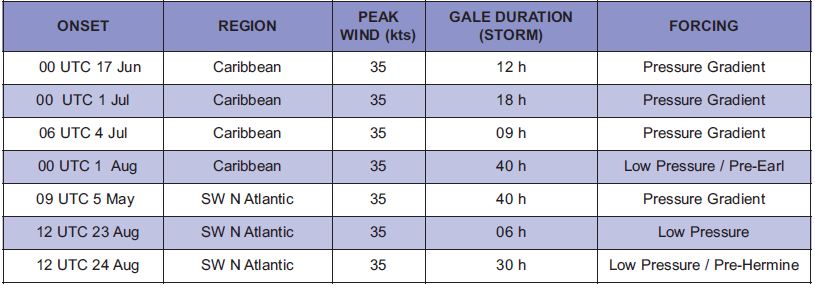Tropical Atlantic and Tropical East Pacific Areas May through August 2016
Jorge Aguirre-Echevarria and Dan Mundell
Tropical Analysis and Forecast Branch
National Hurricane Center, Miami, Florida
NOAA National Centers for Environmental Prediction
Atlantic Ocean including the Caribbean Sea and the Gulf of Mexico
There were seven (7) non-tropical cyclone gale events that occurred between 1 May and 31 August 2016 in the area of high seas forecast responsibility (7N to 31N, west of 35W including the Caribbean Sea and Gulf of Mexico) of the National Hurricane Center's (NHC) Tropical Analysis and Forecast Branch (TAFB). The Caribbean Sea basin had the most gale events for this time period, but considerably less than last year.

Table 1. Non-tropical cyclone warnings issued for the subtropical and tropical Atlantic Ocean, including the Gulf of Mexico and Caribbean Sea between 1 May and 31 August 2016.
Pre-Earl Caribbean Gale Event:
A strong tropical wave entered the eastern Caribbean Sea at about 1200 UTC on 31 July. The wave was moving rapidly westward along the southern periphery of the Atlantic subtropical high pressure. By 0000 UTC 1 August, low pressure of 1010 hPa had formed along the wave axis near 15N68W. (Figure 1) A tight isobaric spacing between the low pressure and the strong Atlantic high pressure induced east to southeast gale force winds of 25 to 35 kts from 15N to 18N between 66W and 69W with seas of 8 to 11 ft. (Figure 2 and Figure 3 ). The Ship

